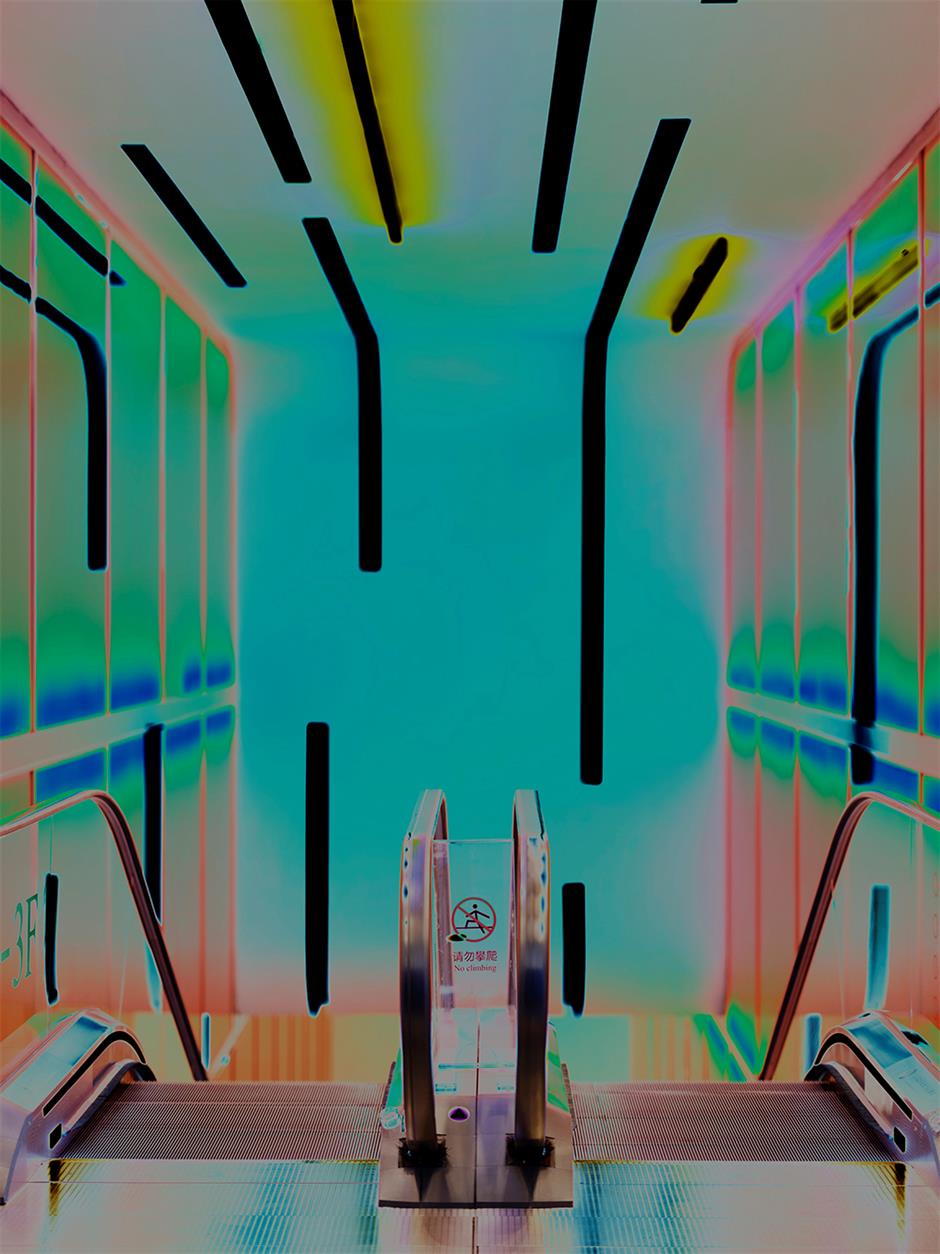Exploring the crossroads of art and AI technology
Huge bubbles, images of stained glass windows and moving robotic arms might surprise visitors at L+MALL for the exhibition "Stained Glass."
Combining art and technology, the exhibition features artworks varying from non-industrial robots, videos and photographs to installations by renowned Swiss artists Andrea Anner and Thibault Brevet (AATB) and Chinese new media artist Hu Jieming.
Under the theme "Art and Artificial Intelligence," the exhibition extends from the art space of APSMUSEUM on the third floor to the interior and exterior public space of the shopping mall.
Visitors should pick up an exhibition guide when arriving in order to navigate through all the exhibits in four different locations.
"Soap Opera" created by AATB is in the atrium on the first floor.
Focusing on non-industrial robots and human/machine interactions, AATB endeavors to extend the function of robots from the realm of mechanical production, and dig out the most cutting-edge ways to use robotic arms and artificial intelligence.
The works of the group's robotic arms show a variety of artistic, interactive and playful combination of movements, in which cold machines are personified with a sense of humor.
The title of "Soap Opera" isn't related to a television show but actual soap bubbles. Two robotic arms wave wands in the air to form thin, fragile bubbles one after the next.
The work deals with the unique and fleeting moments of a soap bubble, quickly coming into existence only to pop seconds later. The bubbles are often used in vanitas ( Latin for "vanity") paintings as a metaphorical symbol for the short transience of life. But here, AATB wants to reflect on whether robots could break their stereotyped images to the public.
Compared with "Soap Opera," their second work "Handshake" might be perceived as echoing the pandemic situation.
The interactive installation features two large hands, one red and the other green. By taking control of one of the large robotic hands, visitors are invited to experience a brief up-and-down movement of the grasped hands of online passersby through http://handshake.aatb.ch from around the world.
Since the COVID-19 outbreak, physical distance, masks and quarantines seem to have developed a lack of trust in some people around us.
"We try to turn the robots in our works to involve genuine effective responses on behalf of humans," said AATB.

"Handshake" – an Interactive Robotic Installation by AATB
The main space on the third floor of APSMUSEUM is devoted to Chinese new media artist Hu Jieming and his works, inspired by stained glass.
"The huge glass dome in the mall seemed to be an iconic container for fashion consumption, which deeply fascinated me at first sight," Hu said.
His photographic series "Viewfinder" is the outcome of three days of shooting in the shopping mall.
To create a sense of flowing, images from "Viewfinder" were transformed to be part of his installation "Meditation Tool Cart" on a three-layer screen.
For visitors, this exhibition offers a picture of how technology fuses into art.
As one of the pioneering digital media and video installation artists in China, Hu has a preference for mixing disparate fields into his artworks. The 64-year-old is today director of the Digital Media Department in the School of Fine Arts of the Shanghai Institute of Visual Arts.
Q: Are there any works related to stained glass as the exhibition title suggests?
A: All the works in this exhibition have nothing to do with glass. This is only the exhibition title. As you know, the venue is inside a shopping mall, a quite special space.
To be site-specific, I found some inspiring and unique resources in this place to create these artworks with expression modes I am quite familiar with, such as photography, video installation and interactive programming.
Q: Will you consider using glass in your future artworks?
A: In my eyes, glass is a strong and powerful medium that has been used by many artists. Maybe I will have a try when the opportunity comes.
Q: What's your view of meditation as in your work "Meditation Tool Cart"?
A: Meditation today is an interesting phenomenon. Literally, it immediately relates to yoga. I have never practiced yoga, so my meditation is utterly different from it.
For me, it is a process of "purification." I don't want to load too much information into my artworks. What I understand about meditation is a "reset procedure" to avoid any outside disturbance. This is, at least for me, effective to improve thinking at work.
Q: What do you think of technology's role in art?
A: It is common to use technology in art. For me, there are no restrictions, only selecting the appropriate technology. When I was at school about 40 years ago, I hardly ever heard the word "computer." In other words, the knowledge I am using now is all self-taught. If I find a knowledge gap that would hinder creations in my artworks, I immediately learn about it by myself to offset such obstacles.
True, technology develops fast, but there is no certain connection between advanced technology and excellent artwork. On the contrary, I oftentimes warn myself not to follow the wrong path.
Q: Please use three adjectives to describe your work?
A: Simple, clear and powerful. These are the three words I would be using for a work that I like, and also the goals I pursue in my work.

Hu Jieming's site-specific photographic series
Exhibition info
Dates: Through November 30 (closed on Mondays), 10am-10pm
Venue: APSMUSEUM
Address: 1/F and 3/F, L+MALL, 889 Pudong Rd S.















